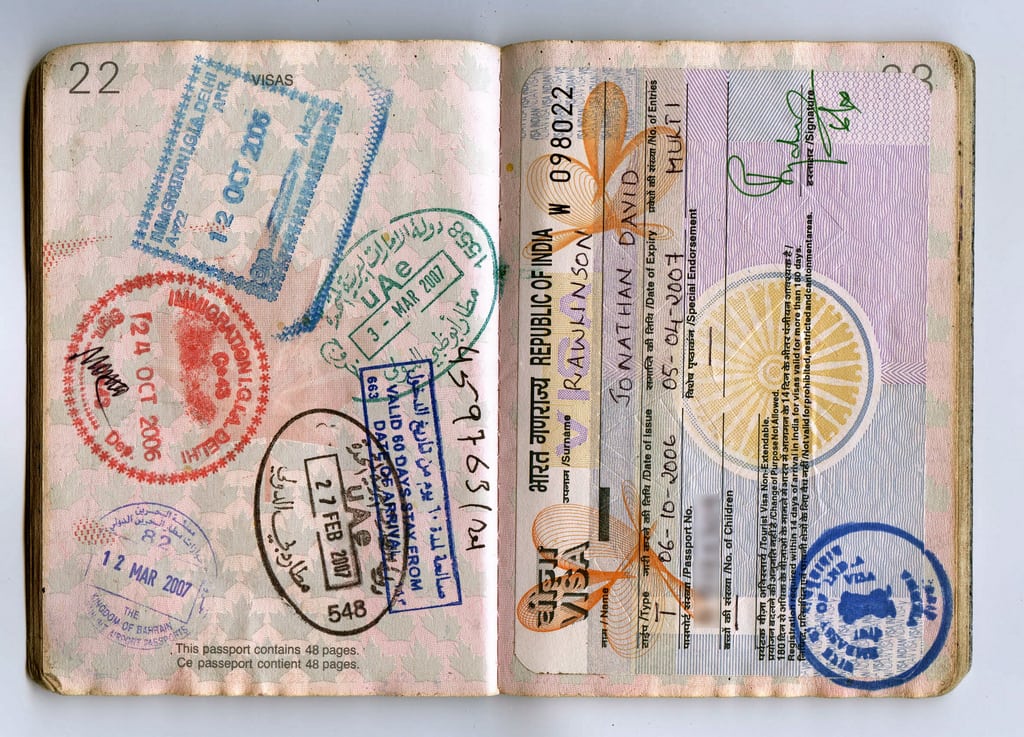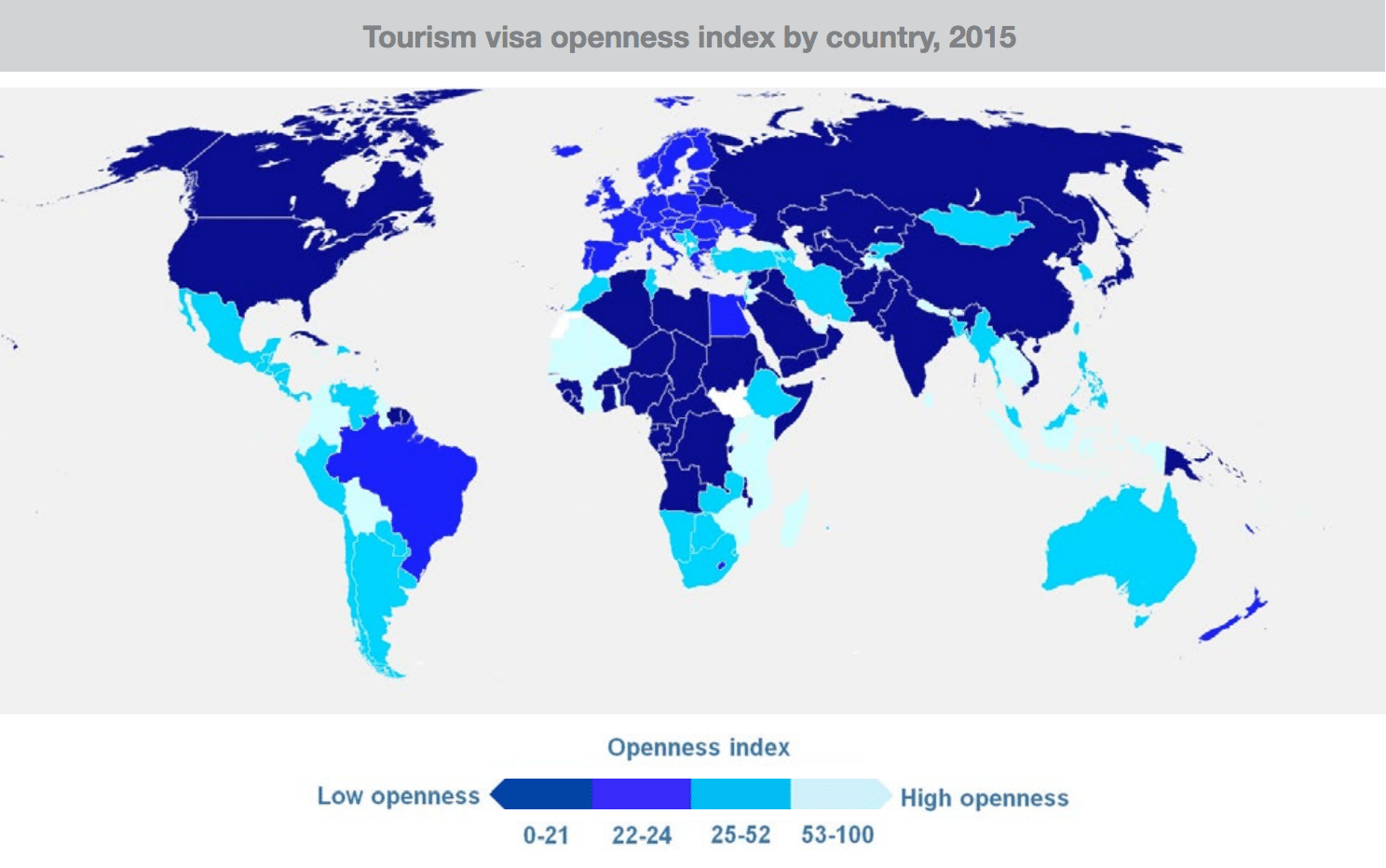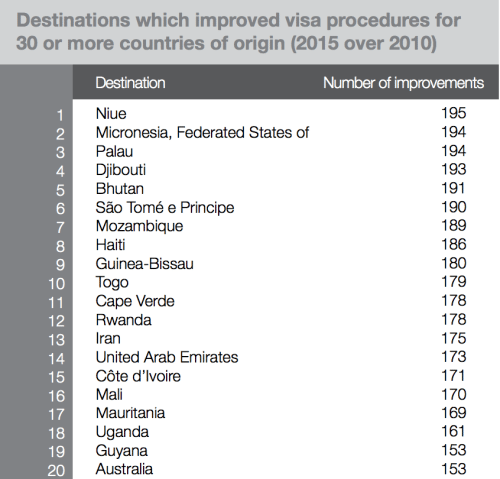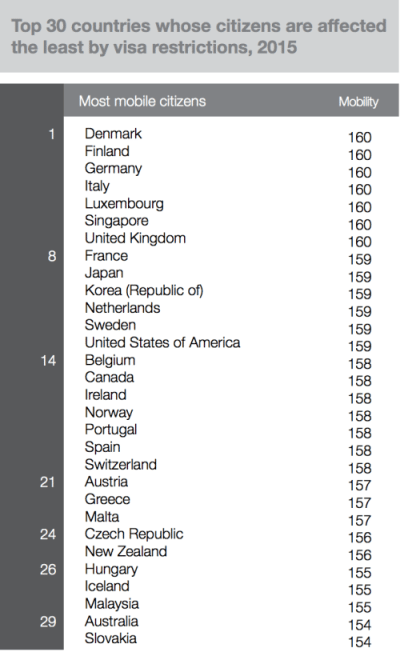Skift Take
The world has less restrictive visa policies in 2016 than it did before the global economic crisis. Let's hope temporary setbacks from terror attacks and security fears don't cause governments to send us backwards.
As violent attacks during the past year in the U.S. and abroad made some governments reexamine their visa policies, the world has far fewer visa restrictions in 2016 than it’s ever had.
The percentage of the world’s population that needs a visa to travel somewhere has decreased 14% from 1980 to 2015 (see charts below). In 1980 75% of the world’s population needed a visa to travel internationally compared to 61% in 2015. That’s according to the United Nations World Tourism Organization (UNWTO) which recently released its annual Visa Openness Report, with its latest edition covering 2015.
Last year about 18% of the world’s population could enter a destination without a visa and another 15% needed visas on arrival. UNWTO’s analysis showed that between 2010 and 2014 the most common visa policy change implemented was from traditional visa to visa on arrival. And electronic visas are more common than ever–data show that between 2014 and 2015 most visa policy changes that UNWTO considers as positive were from traditional visas to electronic visas.
It’s a different story with visa policy reciprocity, though, given the largest percentage increase in this area since 2008 has been with non-reciprocal policies. Eight years ago 29% of visa policies weren’t reciprocal, meaning countries unilaterally welcomed tourists by eliminating visa requirements or instating visas on arrival or electronic visas. Between 2008 and 2015 the percentage of non-reciprocal visa policies increased from 29% to 49%. UNWTO’s analysis found that about half of these non-reciprocal policies exist between countries with emerging economies.
Chart 1: Visas are required for about 60% of the world’s population as of 2015, as this map helps illustrate. About 75% of European countries require a visa for entry, the highest percentage for any region. About 57% of African countries require a visa, the smallest percentage of any region. Central Africa, North Africa and North America are the sub regions with the highest percentage of countries requiring visas at 92%, 84% and 83%, respectively.
Chart 2: In terms of visas, the world is more open for tourism in 2016 than it was in 1980, when 75% of the world’s population needed a traditional visa to travel somewhere.
Chart 3: Some 51% of all visa policies were reciprocal in 2015, where two countries both have the same visa policies, compared to 71% in 2008. That’s a 20% decrease in reciprocity since the global economic crisis began nearly eight years ago. The percent decrease is greater for reciprocity for traditional visas, a 26% decrease from 2008 to 2015.
Chart 4: UNWTO considers 48 source markets as highly mobile markets, meaning these countries’ citizens enjoy the highest freedom to travel. They’re able to enter at least half of the world’s destinations without any visa requirements. China and India, for example, faced less restrictive visa policies in 2015 than in 2008, highlighted in this chart.
Chart 5: Overall, 54 destinations significantly facilitated travel for citizens of 30 or more countries by changing their visa policies from visa required to electronic visa, visa on arrival or no visa required. Most visa policy advances between 2010 and 2015 took place in Africa and Asia-Pacific, 40% and 29% respectively. East and West Africa made important changes by replacing traditional visa with visa on arrival. In South Asia policy improvement has been driven by replacing traditional visas with electronic visas.
Chart 6: Interestingly, from the top 15 destinations in the world with the highest proportions of international tourist arrivals (15 million and up), 73% have exempted visa requirements entirely for the majority of the 48 highly mobile source markets.
Source: UNWTO
The Daily Newsletter
Our daily coverage of the global travel industry. Written by editors and analysts from across Skift’s brands.
Have a confidential tip for Skift? Get in touch
Tags: tourism, unwto, visa waiver, visas
Photo credit: An Indian visa in 2008. Jon Rawlinson / Flickr.com






